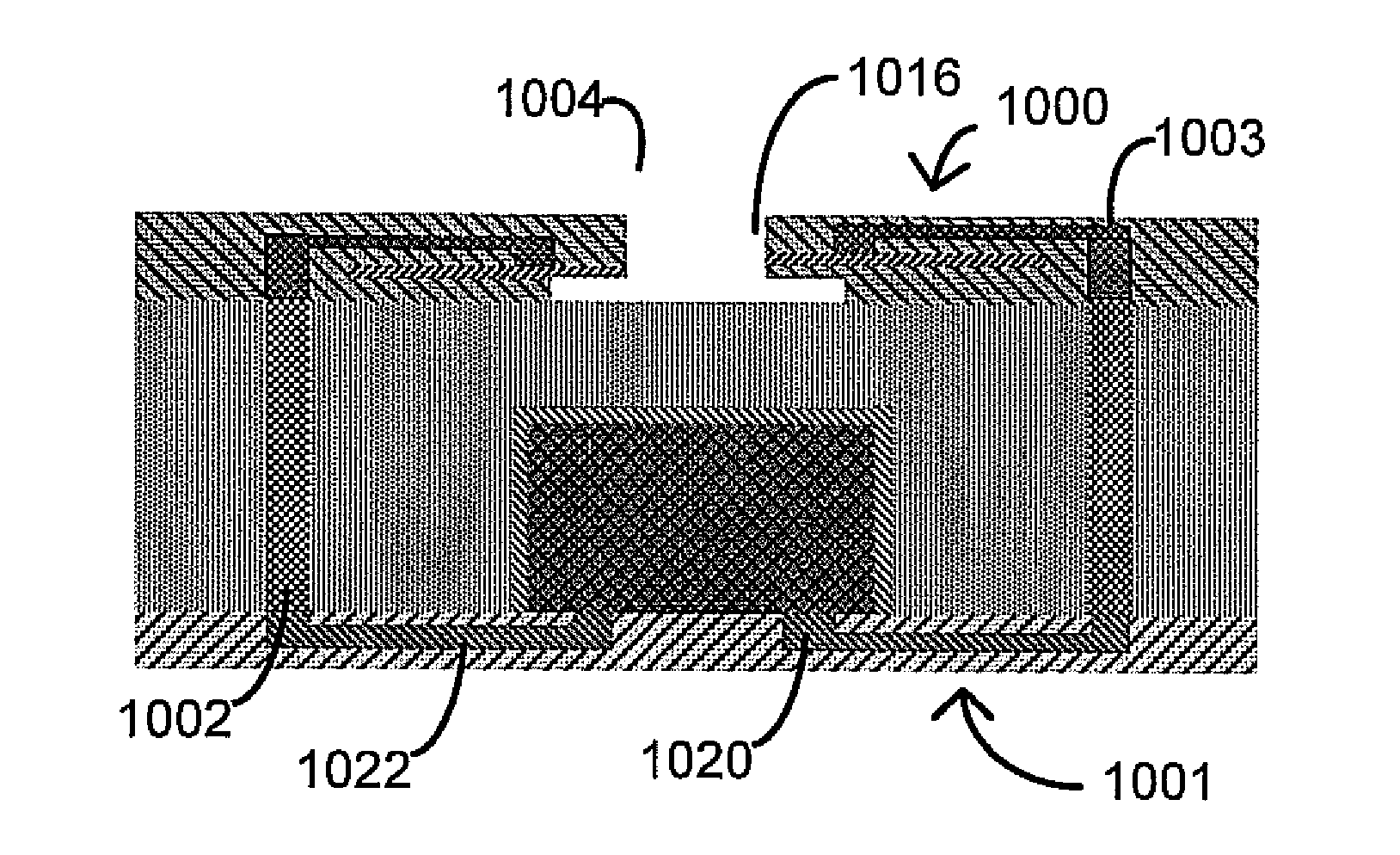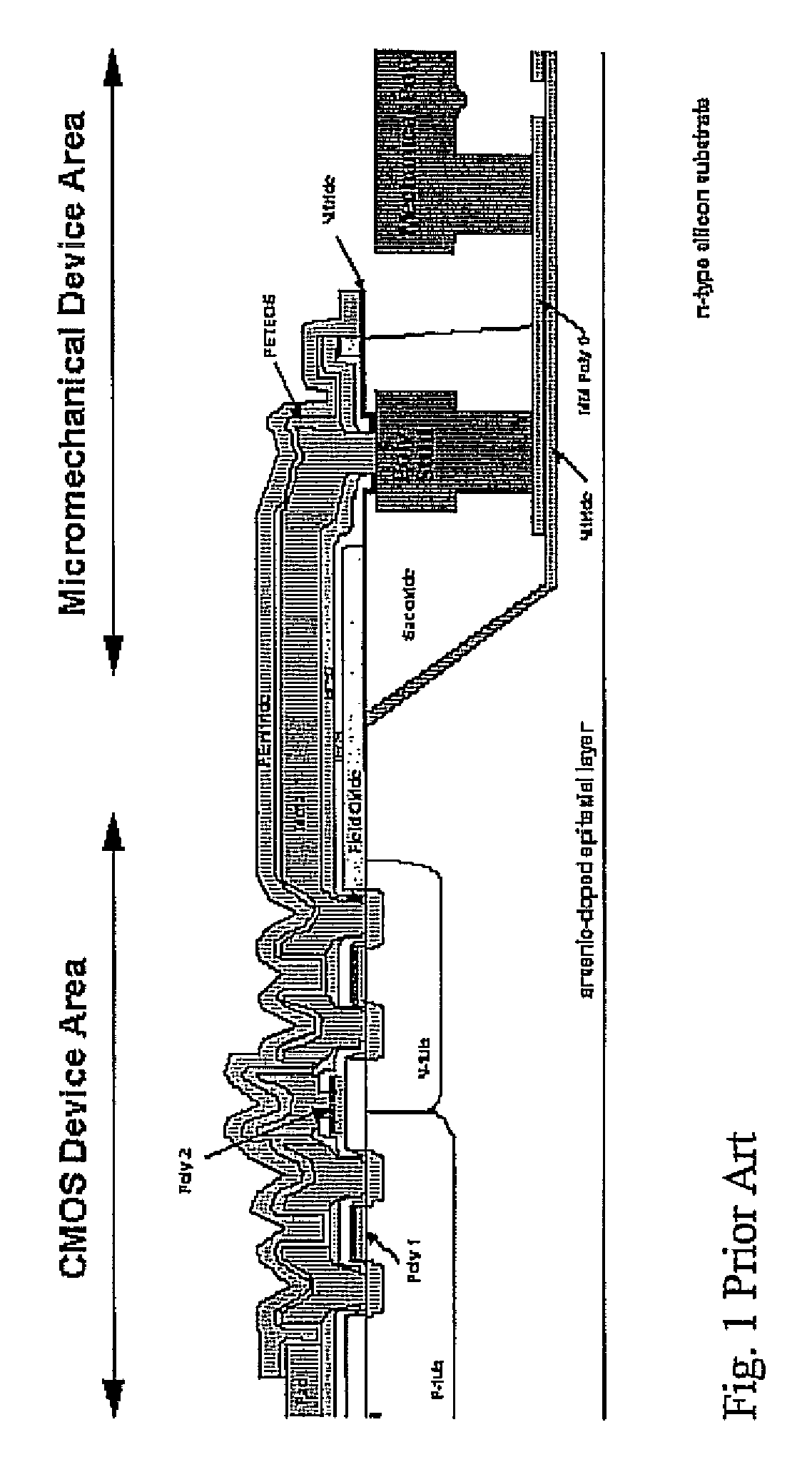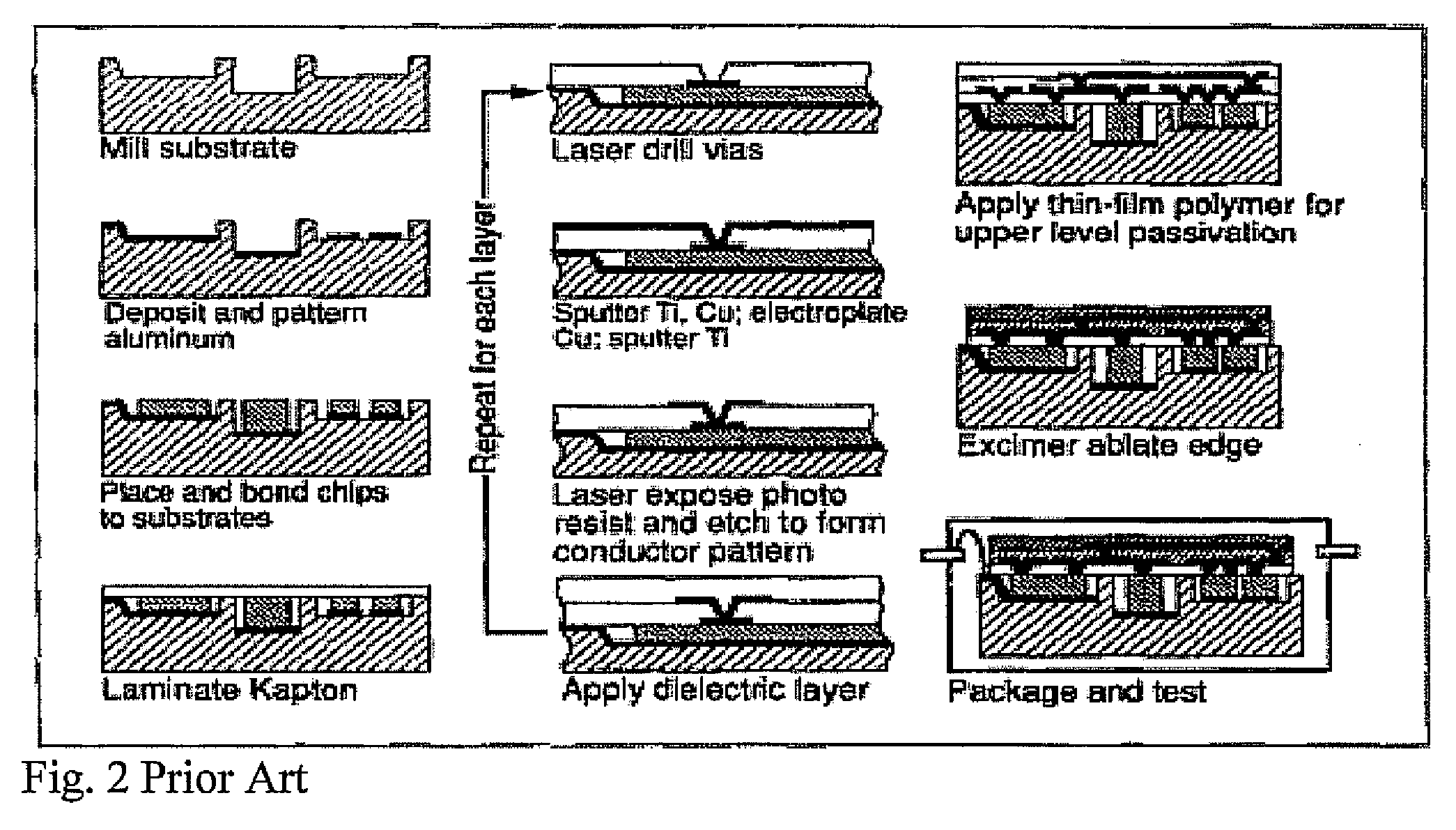Method of forming monolithic CMOS-MEMS hybrid integrated, packaged structures
a technology of cmos and cmos, applied in the field of integrating mems and cmos structures, can solve the problems of requiring material sacrifice, unable to perform on the same substrate, and current cmos-mems integration methodologies facing serious limitations
- Summary
- Abstract
- Description
- Claims
- Application Information
AI Technical Summary
Benefits of technology
Problems solved by technology
Method used
Image
Examples
Embodiment Construction
[0030]Referring to the various Figures there is shown an effective, reliable, and relatively low cost method of integration between CMOS-MEMS / NEMS.
[0031]In one embodiment of a “post CMOS” or “CMOS first” hybrid integration approach shown in FIGS. 3a-3h, the already fabricated CMOS semiconductor substrate is modified to achieve this integration. The CMOS device area is first protected so as not to affect their functionality in the ensuing process; fabrication is continued on the same substrate and integrated by coupling the micromechanical structures in a hybrid approach by placing the MEMS / NEMS dies that have been diced. The integrated system is finally packaged in an effective manner.
[0032]Again referring to FIGS. 3a-h, there is shown a cross-sectional process flow for the “Post CMOS” monolithic hybrid integration approach on a semiconductor substrate 302. A CMOS fabricated semiconductor substrate 302 with dielectric layers and metallization in FIG. 3a is provided as a starting poi...
PUM
 Login to View More
Login to View More Abstract
Description
Claims
Application Information
 Login to View More
Login to View More - R&D
- Intellectual Property
- Life Sciences
- Materials
- Tech Scout
- Unparalleled Data Quality
- Higher Quality Content
- 60% Fewer Hallucinations
Browse by: Latest US Patents, China's latest patents, Technical Efficacy Thesaurus, Application Domain, Technology Topic, Popular Technical Reports.
© 2025 PatSnap. All rights reserved.Legal|Privacy policy|Modern Slavery Act Transparency Statement|Sitemap|About US| Contact US: help@patsnap.com



